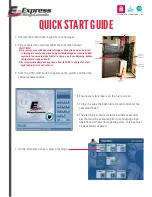
16
17
When hard sulfate is present, the battery shows a false voltage, higher than its true
voltage, fooling the voltage regulator into thinking that the battery is fully charged. This
causes the charger to prematurely lower current output, leaving the battery discharged.
Charging at a higher-than-normal voltage and low current may be necessary to break
down the hardened sulfate.
Hardened sulfate also forms in a battery that is constantly being cycled in the middle
of its capacity range (somewhere between 80% charged and 80% discharged) and is
never recharged to 100% SOC. Over time, a portion of the plate’s active materials turns
into hard sulfate. If the battery is continually cycled in this manner, it will lose more
and more of its capacity until it no longer has enough capacity to perform the task
for which it was intended. An equalizing charge, applied routinely every three to four
weeks, should prevent the sulfate from hardening.
In both cases, the fact that the battery “won’t take a charge” is a result of improper
charging procedures which allowed the sulfate to harden. In most instances, it is
possible to salvage a battery with hardened sulfate. The battery should be charged
from an outside source at 2.6 to 2.7 VPC and a low current rate (approximately 10-
Amps) until the specific gravity of the electrolyte starts to rise. (This indicates that the
sulfate is breaking down.)
To prevent cell damage, be careful not to let the cell temperature of the battery rise
above 51°C (125°F). If it does, turn the charger off and let the battery cool. Then,
continue charging until each cell in the battery is brought up to full charge, verified by
specific gravity readings. The time needed to complete this recharge depends on how
long the battery has been discharged and how hard the sulfate has become.
If a battery does not seem to be taking or holding a charge, test the specific gravity of
each cell with a hydrometer or refractometer. If all cells are reading low even after an
extended charge, it is likely that hardened sulfate that has accumulated on the plates.
By following the instructions outlined above, the problem may be corrected.
OTHER CAUSES OF SULFATION:
LOW ELECTROLYTE LEVEL
- If the electrolyte level in a cell drops below the top of the
plates the exposed surfaces will dry, harden and become sulfated. In this case, cell
damage and capacity loss is usually permanent.
ADDING ELECTROLYTE
- If premixed electrolyte is added to a sulfated cell, the
condition will be aggravated.
HIGH SPECIFIC GRAVITY
– High specific gravity of electrolyte increases the
accumulation of sulfation. Batteries which reach a full state-of-charge, as measured by
specific gravity on a regular (weekly) basis, are much less likely to experience sulfation
buildup.
Summary of Contents for 16 CH 25P
Page 2: ...RAILROAD DIESEL STARTER ...
Page 27: ...25 ...











































